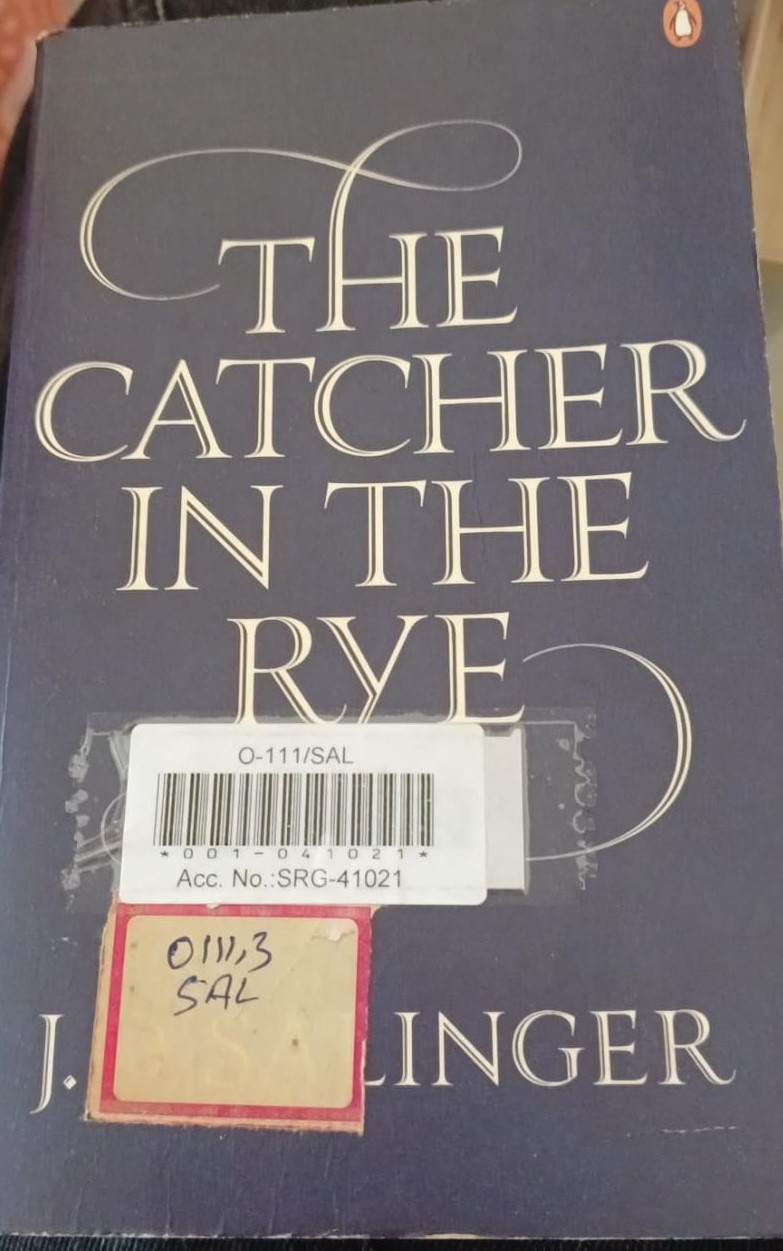
Original Title
The Catcher in the Rye
Subject & College
Publish Date
2010-01-01
Published Year
2010
Publisher, Place
Total Pages
192
ISBN 13
978-0-241-95042-5
Format
Hardcover
Country
USA
Language
English
Readers Feedback
The Catcher in the Rye
Book Review : Miss. Anushka Avinash Darekar, Mahatma Gandhi Vidyamandir’s Loknete Vyankatrao Hiray Arts, Science and Commerce College, Panchvati, Nashik If a body catch a...Read More
Miss. Anushka Avinash Darekar
The Catcher in the Rye
Book Review : Miss. Anushka Avinash Darekar, Mahatma Gandhi Vidyamandir’s Loknete Vyankatrao Hiray Arts, Science and Commerce College, Panchvati, Nashik
If a body catch a body coming through the rye this free transform into a metaphor for the desire to protect innocence particularly of children and prevent them from falling into the corruption and complexity of adulthood.
The Catcher in the Rye by J.D. Salinger is a seminal coming-of-age novel that delves into themes of alienation, identity, and the loss of innocence. The story is narrated by Holden Caulfield, a disenchanted 16-year-old who recounts events following his expulsion from Pencey Prep, a prestigious boarding school.
The novel begins with Holden leaving Pencey after a fight with his roommate, Stradlater. Unwilling to face his parents, he decides to spend a few days in New York City. Wandering through the city, Holden encounters a series of people, including former teachers, acquaintances, and strangers. These interactions reveal his growing dissatisfaction with the “phoniness” he sees in the adult world and his inability to find genuine connections.
Holden’s inner turmoil stems from multiple sources: his grief over the death of his younger brother, Allie; his fear of growing up; and his yearning to protect the innocence of children. His fantasy of being “the catcher in the rye,” where he imagines himself saving children from falling into adulthood’s corruption, becomes a central symbol of his resistance to change and his deep-seated need to shield others from the pain he feels.
Throughout the novel, Holden’s relationships highlight his contradictions. He longs for intimacy but often sabotages potential connections. For instance, his interactions with Sally Hayes and Jane Gallagher reflect his conflicting desires for closeness and his fear of vulnerability. Similarly, his bond with his younger sister, Phoebe, serves as a rare source of comfort and understanding. Phoebe represents the purity and honesty Holden seeks in the world, and their conversations offer glimpses of his capacity for love and self-awareness.
As the story progresses, Holden’s mental state deteriorates. His constant feelings of isolation and alienation are exacerbated by his inability to reconcile his idealized vision of childhood with the realities of adulthood. This tension drives him to emotional and physical exhaustion. He visits places from his past, such as the Museum of Natural History, which symbolizes the unchanging, predictable world he yearns for, contrasting with the chaotic unpredictability of his own life.
The novel concludes with Holden narrating from a mental institution, where he reflects on his experiences. Although he expresses a vague plan to return home and attend another school, his future remains uncertain. The open-ended nature of the story leaves readers to ponder whether Holden will find peace or continue to struggle with his existential questions.
Through its intimate and candid portrayal of Holden’s thoughts and struggles, The Catcher in the Rye captures the universal tension between the innocence of youth and the complexities of adulthood. Salinger’s timeless narrative continues to resonate with readers, offering a poignant exploration of the challenges of growing up and the human desire for authenticity in a seemingly superficial world.
